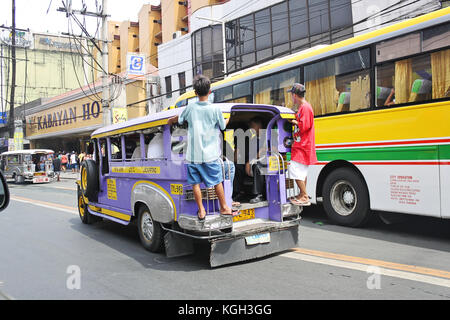Just How Transit Marketing Can Change Mass Transit Spaces Into Dynamic Advertising And Marketing Platforms
Transportation advertising and marketing holds substantial possibility to redefine public transport spaces into dynamic advertising systems that engage and inform. As we explore the multifaceted advantages and evolving strategies of transit advertising, it increases the question of how this improvement might redefine our communications with both brand names and the city setting.
Advantages of Transit Advertising

In addition, transit advertising is extremely affordable contrasted to traditional media. It enables advertisers to attain high impressions at reduced costs, making the most of roi. The restricted target market of commuters supplies an opportunity for brand names to convey their messages to people that are typically responsive during their travel times.
In addition, the dynamic nature of transportation advertising allows campaigns to be upgraded regularly, making certain that messaging remains prompt and relevant. This versatility can be critical in responding to market trends or promotional occasions, maintaining the brand name top-of-mind for customers. Finally, the prevalent existence of transportation advertising and marketing adds to brand name recall; repeated exposure within familiar traveling contexts reinforces brand recognition and promotes consumer commitment, eventually enhancing and driving sales brand track record.
Sorts Of Transportation Advertising
Public transportation systems offer various styles for marketing, each accommodating various advertising methods and target market interaction techniques. One famous kind is outside bus and train covers, which cover the whole automobile and produce a mobile billboard impact, enabling high visibility in urban environments. These wraps can record focus as they traverse busy roads, getting to a varied audience.
Another popular layout is interior advertising, that includes posters, electronic screens, and advertisements on transit seats. These placements involve travelers during their trip, enhancing brand messaging in a restricted area. Digital displays, specifically, supply the advantage of vibrant material, allowing advertisers to upgrade messages in real-time.
Terminal advertising is also significant, including posters, banners, and interactive booths within transportation stations. These advertisements leverage foot website traffic and can target certain demographics based on place.
Lastly, marketing partnerships with transportation authorities can lead to special campaigns, such as themed transportation experiences or events, enhancing the general involvement with commuters. Each kind of transit marketing offers unique advantages, allowing brands to customize their technique to properly reach their target market within the public transportation ecological community.
Involving Travelers Efficiently
Travelers are significantly swamped with advertising and marketing messages during their everyday trips, making it vital for brand names to engage them in innovative methods. To record attention in this congested room, marketers need to focus on creative thinking and relevance. Using eye-catching visuals and concise messaging can dramatically boost the likelihood of interaction.
Interactive aspects, such as QR codes or enhanced fact attributes, can additionally change fixed advertisements right into immersive experiences, fostering a deeper connection with the audience. Brands ought to concentrate on resolving travelers' demands and passions, customizing messages to reverberate with their way of living, whether through promotions for regional services or services developed to improve their commuting experience.
Furthermore, timing plays an important duty; purposefully positioning advertisements throughout height travelling hours can take full advantage of exposure and effect. Engaging travelers properly additionally includes leveraging social networks combination, enabling travelers to share their experiences or promotions straight from index transit platforms, thereby intensifying brand name reach.
Essentially, efficient engagement pivots on understanding the commuter trip and producing compelling, interactive, and pertinent marketing experiences that not only record attention but additionally drive activity and commitment. By doing so, brands can change public transport into a vibrant marketing platform that reverberates with its audience.

Measuring Advertising Influence
How can brands accurately assess the effectiveness of their advertising projects en route settings? Measuring the influence of transit advertising and marketing requires a complex method that incorporates qualitative and measurable metrics. One widespread approach is tracking involvement with mobile analytics, where brand names can examine foot traffic patterns and app communications previously, throughout, and after campaigns.
Surveys can give valuable understandings into brand recall and customer sentiment, enabling brand names to gauge exactly how well their messages reverberate with commuters. Furthermore, keeping an eye on social media interaction pertaining to details campaigns can disclose shifts in public assumption and brand discussion.

In addition, teaming up with transit agencies can improve measurement accuracy, as they often possess comprehensive market information on ridership fads. By incorporating these techniques, brand names can create a comprehensive understanding of their marketing efficiency, guaranteeing that their campaigns not only reach yet also impact their target audiences effectively.
Future Trends in Transit Advertising
A significant change is prepared for in transportation advertising and marketing as technical improvements and altering consumer habits reshape the landscape. Transit Advertising Philippines. The integration of interactive media and digital displays is anticipated to boost interaction, enabling brands to deliver vibrant web content that resonates with varied target markets. As mass transit systems accept smart technology, marketers will leverage real-time information analytics to tailor messages based on guest demographics and habits
Moreover, boosted truth (AR) is positioned to revolutionize the method commuters communicate with ads. By supplying immersive experiences, AR can transform a mundane trip right into an engaging story that catches attention and cultivates brand name loyalty. This innovation will likely urge advertisers to develop more experiential projects that drive consumer communication.
Sustainability is another critical pattern affecting transportation advertising. As environmental awareness expands, brands will progressively look for to straighten with eco-friendly techniques, utilizing lasting products and promoting environment-friendly initiatives within their projects.
Verdict
In conclusion, transit advertising provides considerable benefits by pop over to this site boosting brand name presence and involving a restricted target market. As trends develop, the capacity for innovative interactions in between brand names and travelers is positioned to click over here now expand, making certain that transportation marketing stays an important component of modern marketing strategies.
Transportation advertising and marketing holds substantial possibility to redefine public transport areas into vibrant advertising and marketing systems that inform and engage. The prevalent existence of transit advertising and marketing adds to brand recall; duplicated direct exposure within familiar traveling contexts enhances brand understanding and promotes consumer commitment, eventually driving sales and improving brand name track record.
How can brand names precisely evaluate the performance of their marketing campaigns in transportation environments?In verdict, transportation marketing supplies considerable advantages by improving brand exposure and engaging a restricted target market. Transit Advertising Philippines. As patterns evolve, the possibility for innovative communications between travelers and brands is positioned to grow, making sure that transit marketing continues to be a crucial component of contemporary advertising and marketing techniques